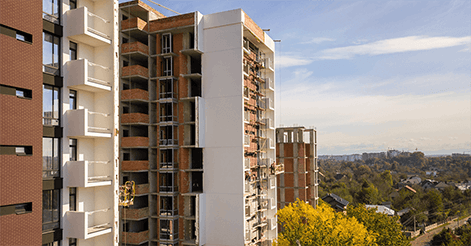America's Housing Market: Where It All Began

 Reprinted from theeconomist.com
Reprinted from theeconomist.com
Signs of stabilisation should not obscure the big problems still ahead.
HE IS hardly your typical distressed seller. Hugh Hefner recently sold his personal residence in Holmby Hills, California, next door to the Playboy mansion, to a 25-year-old entrepreneur for $18m—some 36% below the asking price. It will come as little solace to the ageing Lothario that the discount looked about right: house prices have fallen by one-third from their peak nationwide, and by much more than that in the worst-hit states, such as California, Florida and Nevada.
Although global financial sickness first erupted in American residential property, thanks to ludicrously lax subprime lending, policymakers have recently seemed more worried about asset classes to which the infection subsequently spread. When the Federal Reserve this week extended the life of a facility to support asset-backed securities, for instance, it was more out of concern for commercial property than for housing. Nevertheless, observers agree that America's economy—and all those banks still saddled with underperforming mortgages—will struggle to recover while house prices are still falling. The Obama administration's economic successes “will be for naught” if the housing free-fall continues much longer, says Mark Zandi of Moody's Economy.com."
Hence the excitement over some recent, albeit tentative, signs of stabilisation. The S&P/Case-Shiller index, which tracks home prices in 20 cities, ticked up slightly in May, its first gain in 34 months (see chart 1, left-hand side). New construction of single-family homes rose in July for the fifth straight month. Sales of existing homes are expected to show their fourth consecutive month of gains when latest numbers are released on August 21st (see chart 1, right-hand side). Toll Brothers, a big home-builder, just recorded its first gain in net orders (new orders minus cancellations) for four years. With homes now at their most affordable in living memory, relative to median income, “we've finally found a level where people want to do deals,” says Pam Liebman, chief executive of Corcoran, an estate agency. The revival is largely at the lower end, which helps explain this week's $1.4-billion acquisition of Centex, a home-builder which specialises in cheaper houses, by Pulte Homes.",
Dig deeper, however, and the recovery's foundations look shaky. Rising joblessness will continue to weigh on demand for homes. The unemployment rate, currently 9.4%, is expected to peak at more than 10% some time next year. The economic effect of unemployment is wider: as more and more of those still in work know someone who has lost their job, they will think twice before buying a property. Consumer confidence remains fragile.
For those seeking a mortgage, credit is still hard to come by. The two main federally backed mortgage agencies, Fannie Mae and Freddie Mac, have tightened their standards for new loans (though mortgages handled by their sibling, Ginnie Mae, have fallen in quality). A Federal Reserve survey of loan officers, released on August 17th, suggested that banks will remain tight-fisted for some time. They are still grappling with growing losses from residential mortgages. These will not peak until early next year, reckons Betsy Graseck of Morgan Stanley.
Moreover, the positive signs in housing are partly driven by short-term factors. One is the tax credit for first-time buyers that was included in Mr Obama's stimulus package: some are rushing to buy now because deals must close by November 30th to qualify. Annual tax refunds, handed out in recent months, may also have given the market a temporary lift. Attractive mortgage rates helped, too. But these have climbed off their historic lows, despite efforts to keep them down through the Fed's purchases of mortgage-backed securities. Many expect them to rise further as ballooning government borrowing puts upward pressure on Treasury yields.
A glut of supply will also weigh on prices, thanks to a wave of repossessions. Foreclosures are running at record levels, with one in 355 of the nation's homes receiving a filing in July alone. Seized properties now account for almost one in four sales (see chart 2). Increasingly, those losing their homes are supposedly safer borrowers with “prime” mortgages. They now account for more foreclosures than subprime borrowers, says the Mortgage Bankers Association (MBA).
With 1.8m homes already in foreclosure, a “similar amount” may be heading that way, reckons Torsten Slok, an economist at Deutsche Bank. Even those states that were the first to feel pain are still seeing a sharp increase in pre-foreclosure notices. In California one type of notice, for “trustee sales”, leapt by 32% from June to July, according to ForeclosureRadar, a website. Even more worryingly, delinquencies, the raw material for foreclosures, are still on the rise across much of the once-golden state. In Orange County nearly 7% of mortgages are at least three months overdue but not yet foreclosed, up from around 5% at the start of the year.
The rise in negative equity—when a borrower's mortgage debt exceeds the value of his home—is also fuelling foreclosures, not least because many would rather walk away than keep making payments on a home that is worth much less than the sum owed on it. Zillow.com, a property-information service, estimates that 23% of homes with mortgages are underwater. Others put it higher. A staggering 60% are submerged in Las Vegas. Deutsche Bank's securitisation team expects negative equity to peak at 48% of total homes by 2011. That may be too pessimistic, but all agree that the number will rise further. This matters because negative equity weighs doubly heavily on home prices, by both weakening demand (it traps potential buyers in their homes) and adding to supply (it often ends in seizure and distressed sales).
Government efforts have done little to stop the rot. Under the main foreclosure-prevention programme, only 235,000 struggling borrowers have had their loans altered to make payments more affordable, out of 4m targeted for help. Even with a financial incentive to modify, loan servicers remain reluctant. Many borrowers are too deep in negative equity and the redefault rate is too high. “It doesn't help if you're drowning in 20 feet of water instead of 30,” says Jay Brinkmann, the MBA's chief economist. Moreover, the typical troubled mortgage is getting harder to modify because it is more likely to be the result of unemployment than an interest-rate increase. Bringing the monthly payment down by 20% does not help when the borrower has no job.


